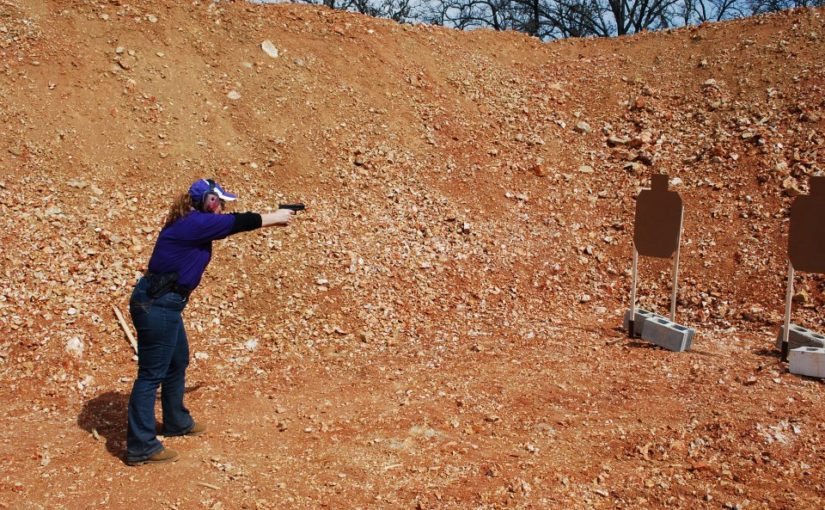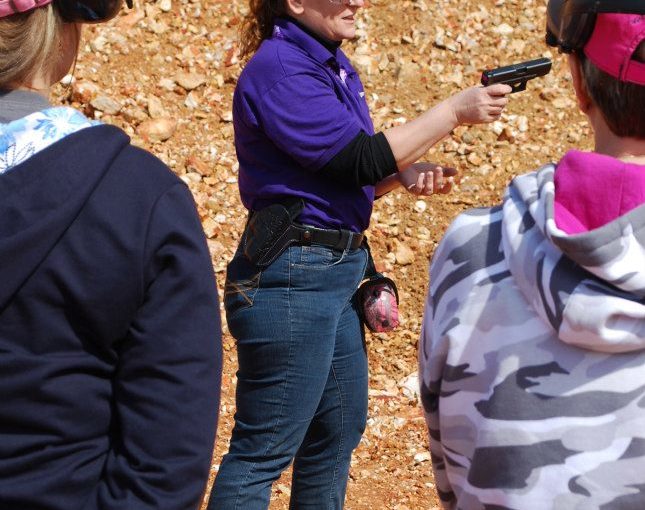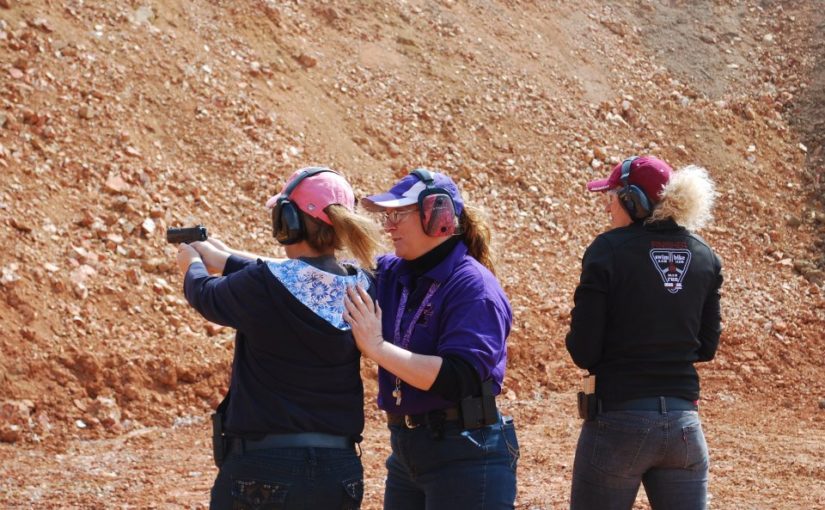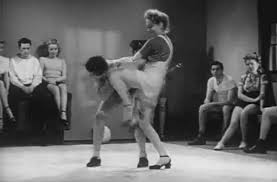Learning looks like a step backwards. Most people tend to think of learning as a process that looks something like this:
[XXX PICTURE HERE XXX]
In reality, for physical skills and especially for complex motor programs, it often looks a lot more like this:
[XXX PICTURE HERE XXX]
There’s a sharp dip when students first encounter a new concept or physical skill. For a short time, the new learning disrupts what they already know, so we’ll often see a decline in their existing level of understanding or ability before they have fully grasped the new material. There’s a double whammy on the physical skills side: Learning a new technique often messes up your existing technique, but you’re not yet practiced enough with the new one to make up for the lost ground.
With some exceptions, the more time we’ve spent learning and refining our existing technique, the deeper and wider that initial dip in performance will be. When we’ve spent a lot of time with one technique, it can take a lot of time and energy to effectively learn a different one.
This has several very important implications for us, both as instructors and as lifelong learners:
- We cannot – repeat cannot! – accurately judge the long-term value of techniques that are new to us after trying them just once or twice. It takes time and repetition to overcome that initial dip in performance. This is one important reason why, no matter what their own preferred stance might be, smart students shoot Weaver Stance all week at Gunsite, and use Stressfire Isosceles when taking a class from Massad Ayoob. It takes repeated practice of an unfamiliar technique before we can adequately judge its merits for ourselves.
- We cannot – repeat, cannot! – reliably judge new products after trying them just once. Again, it takes time and repetition to overcome the initial dip in performance when we change away from doing something we’ve practiced a lot. When you choose to write product reviews, even brief ones, for your students or a wider audience, be sure you’re giving the products a fair shake (and, just as important, a fair chance to fail) before you take pen in hand. This goes for new holster designs as much as it does for any other type of gear.
- When we read articles comparing the speed (or ease of use) of Technology A against Technology B, we should view those claims with a healthy dose of skepticism. Lasers vs night sights, should we move the magazine release levers from here to there, which way is the best way to carry your magazine? Whatever the question might be, very few reviewers take enough time and spend enough energy to become equally-skilled at both options before measuring one against the other. All too many already have an answer before they even ask the question, and that means we should always read such claims with caution – and certainly think twice before we repeat them to others.
Once we understand the initial dip in performance when people change an existing way of doing things, we realize why it’s so hard to sell a new, undeniably better technique to students who’ve already spent a lot of time developing a different one. This isn’t an unreasonable response on the part of our students. It’s normal and even good.
The shape of the learning slope means that your available class time will strongly dictate how much you can expect to change your students’ existing habits – and how hard you should try. Longer classes provide more leeway to introduce radically new techniques, while shorter classes must build on existing foundations. If you’ve only got them for a short program, it may be more worthwhile to simply teach them how to do better within their own paradigm, even when that paradigm may not be the one you prefer.
Before you try to switch anyone away from an existing technique that they believe is working for them:
- Be sure you will have enough time to be fair to both the student and yourself;
- Take a moment to explain the shape of the learning slope; and
- Make sure you understand the student’s goal for the class, and shape your suggested changes to meet your student’s goals rather than your own.
Never suggest a student change techniques simply because you yourself prefer a different technique. Instead, carefully weigh the anticipated benefits against the time and effort it will cost your student to change. Are you absolutely sure your suggested change will be worth that level of effort and that investment of time?
Don’t suggest big changes, such as switching Weaver shooters to Isosceles (or vice versa), unless you will have enough time for their performance to rebound after the switch. Similarly, in the absence of safety factors, don’t make big changes to students’ grips unless you have enough time for the change to settle in.
It’s an easier sell if you have a compelling, easily-demonstrated reason that the switch will make a long term difference in the shooter’s world.
In classes where using your preferred grip or stance (or whatever) will be foundational to later techniques within the same class, assure students that those later techniques will clearly show why you want them to switch to your preference now. Provide either a quick demonstration or at least a simple explanation of how things will later fit together, to give them a taste of what lies ahead. Then make sure you complete the sale before closing time. Make sure your work throughout the class will give them enough time with the new technique that they can see its value for themselves before the class is over.
| “Be wary of instructors who refuse to tell you why what they are teaching is worth your time, money and energy to learn, master and anchor. ‘Because I said so’ or ‘because this is how I teach this’ is not enough.” – Dave Spaulding |
The shape of the learning slope has one more important implication for us as instructors. Because good teachers should be generalists – able to pick up many different types of guns and effectively demonstrate their use, able to efficiently demonstrate many different shooting and gunhandling techniques in addition to their own most-preferred method – it can be difficult for even the best instructor to display the absolute highest level of skill in competitive shooting events. That’s because the highest competitive performers work very hard to keep small grains of sand like these out of their finely-tuned shooting gears. Although the best competitors will usually remain open to trying new techniques to get a competitive edge, they also can’t risk messing up their existing habits by practicing different techniques than the ones they use in competition, or by constantly switching either gear or techniques. During the off season, they may play with a wide variety of techniques and try out new gear, but during the shooting season, they often work hard to perfect only the techniques and gear they will use in that season’s events. There are important reasons for that, and the shape of the learning slope is one of those reasons.
This factor does not matter at all for instructors who compete in the mid ranges (as many do quite successfully), but if you’re looking at the possibility of a jump to the supersquad, you may want to keep it in mind.
Once we realize that learning sometimes looks like hard work, and might even look like a step backwards, it isn’t surprising that our students may not always see their progress the same way we do.
Learning sometimes looks like failure. From the student’s perspective, learning sometimes looks and feels like failure. Repeated failure. Repeated, potentially demoralizing failure.
Because we continually set small, fresh challenges in front of our students, some will have a constant sense that they “can’t quite” do any task we give them – even when they do succeed. These students tend to focus on the “just barely” nature of their success, and fail to see that they are succeeding. Because every task we set them is a little harder than the one before, together they add up to a long staircase of skills that leads the student to a higher level of ability and achievement, and we as teachers tend to focus on that progress. The student, however, might only see the effort and feel the continued sting of not quite getting it together.
This is another reason to celebrate each milestone along the road to improvement. Some students won’t ever notice the mile markers, or realize how far they’ve come, unless we tell them. Showing them exactly where they’ve made progress can help these students stay engaged and working hard when they might otherwise give up in despair. We also need to look ahead with them to the ultimate goal so they understand how much more work there remains to do, so they don’t quit prematurely from unrealistic optimism about their existing skills. They need to see both how far they still need to travel, and how far they’ve already come.
| “Failure is a gift. Embrace it in training because those failures will provide you with priceless insight and preparation. I am prouder of the student who fails, but tries harder to succeed. It shows great character. Even in this artificial environment adversity is something to be overcome. Plus, it makes your successes sweeter.” – Jeff Gonzales |
Does all of this sound discouraging? It shouldn’t. It can actually be very encouraging for the student to realize that the reason he is finding the work hard to do, is because the work is hard. Without that understanding, he may think there’s something wrong with him when he doesn’t find it easy. He might beat himself up for that instead of celebrating his progress. He might even give up and quit, not realizing that the apparent failure he’s experiencing in the moment is actually the fast track to success.
Learning sometimes looks like failure for a different reason. That’s because sometimes, a student perched on the brink of an “aha!” moment might not be making any measurable progress at all.
We sometimes – often – see this type of learning the first time we put a student on a moving target. They try and try and try to hit the mover, and get annoyed that they can’t quite seem to get the hang of it. We reinforce the fundamentals and remind them of the basic strategy. We coach them to see the front sight and press the trigger smoothly, simply moving the muzzle along with the target so that it’s exactly like shooting a target that doesn’t move. They try again and they struggle some more. Then all at once the light bulb goes on, the student says, “OH!!” as they hit the target cleanly, and apart from minor bobbles they rarely have trouble with moving targets again. After a long stall on the edge of success, they finally unlocked the code and they feel wonderful.
The middle of this process looks a lot like failure – like repeated attempts that don’t work, don’t get any better, and don’t achieve the desired result. What makes it learning instead of true failure, is that each of these failures is greeted with the kind of grit that gets up and tries again, again, again. And keeps doing that, over and over, until the result changes. That’s true grit.
It’s also the definition of insanity.
It’s insanity, that is, unless each try includes either a slightly different strategy toward achieving success, or a slightly better effort at using an already known strategy. (There’s a coaching hint in that sentence, somewhere.)
| “Success is stumbling from failure to failure with no loss of enthusiasm.” – Winston S. Churchill |
Not long ago, I saw a charming online video of a young boy who made a “Rube Goldberg machine” – a multipart contraption that creates a complicated chain reaction to do a simple task. This particular creation would be started by knocking down one domino that would set off a series of dominoes, which would then knock a small bowling pin into a bowl causing a shockwave that would move a small gyroscope down a pair of dowels and then bump into a steel marble that would run through a spiral tube and then down a ramp where it would bump into a switch to activate a toaster that would cause the toast to pop up and a lever to rise that would … but you get the idea.
As the child explained on the video, because Rube Goldberg designs are complex, it’s common for them to fail many times in trials before the builder finally gets it right. The kid estimated that he would probably need to run the machine ten to twenty times before he succeeded. Then he began running his trials. As each attempt failed, he figured out what had caused the failure, corrected it, and tried again. By the end of the video, when his machine finally worked, he was dancing around and giggling with ecstatic glee: “It worked on the fourth try! Look, I thought it was going to be umpteen failures, but it was only three failures! That’s surprising! It worked!”
Having an expectation that failure – even repeated failure – would be a normal part of the process made it possible for the boy to keep working despite the effort it took to get it right. It gave him the energy to try different strategies and avoid discouragement. It set him up to celebrate his achievement when it came, rather than beating himself up for having to work hard to get there. Learning should feel good.
There’s something else. Every failure brought the Rube Goldberg kid incrementally closer to his goal. He failed in a different spot every time, fixing a different step in the process each time the machine went off the rails. Because he was committed to learning from each failure, he did not fail in the same place twice. He analyzed each failure and figured out how to avoid it in future. (And there’s another coaching hint.)
Although from the perspective of an accomplished shooter, a task such as drawing to fire a single round might seem incredibly simple, it’s actually quite complex – even more complex than getting a Rube Goldberg machine to work. For this reason, as we work with students it’s important to remember that sometimes, from a student’s perspective, learning looks a lot like failure. We must frame this reality in a way that keeps them motivated and helps them to move forward.
Here’s one more possible thing we might see when we look to see whether students are learning in class. It’s the flip side of learning looking like failure.
| “You have learnt something. That always feels at first as if you had lost something.” – George Bernard Shaw |
Sometimes, failure to learn looks like learning. Don’t let this one fool you. Some students are highly committed to looking good in class, and that means they are not risking anything, not learning, not growing. These are often the folks who were told as children that smart kids never get anything less than straight A’s in school, so they’re reluctant to tackle anything that might make them look bad as an adult. Their shooting often looks pretty good when you first meet them, but it will rarely get any better, because they’re afraid to push their own limits. Some students have ego riding on their existing level of accuracy, and thus won’t push themselves to get faster or to shoot at smaller targets or greater distances. Other students have ego riding on their existing speed, and thus won’t sacrifice even an ounce of speed in order to learn how to shoot more accurately. In either case, these students aren’t willing to learn and in fact they are not learning.
You may notice this when you tell your students to speed up and shoot faster. You don’t want them to miss paper, you might tell them, but it’s perfectly okay if their groups open up a little, perhaps from a fist-sized group to a hand-sized one – because that’s how they’ll learn what the right speed is for them right now, and that’s also how they’ll learn to shoot more quickly. They have to push their existing limits in order to learn where their limits really are and then overcome them. They have to risk the miss in order to learn the speed.
But some students won’t do it. Simply will not.
There are two ways to deal with this type of reaction from a student. No, three. The third and least-desirable option is to simply ignore it and let it slide, as if you’d never noticed what that student was up to on your line. Since this student will often be trying to avoid your attention anyway, it’s easy enough to give her a day of supervised practice without pushing her to learn much more than she came with. This sometimes might be necessary, but shouldn’t be done lightly, and never just for your own convenience.
| “It is funny to see people complain so much about a miss… There is no pressure on you, there is no fear of death or injury. We are in a friendly environment trying to improve. Some people are more interested in stroking their ego than truly improving and that’s a problem.” – Jeff Gonzales |
Because these slow but accurate students usually shoot small, beautiful groups, you might be tempted to think they don’t really need your attention anyway – but they do. Meanwhile, don’t let a small group size fool you into thinking this resistant student is learning well. She’s not. She’s simply practicing the things she’s already good at in a way that doesn’t risk her ego in front of others.
When you decide to reach this student and help her move to a place where she’s willing to risk looking bad in the eyes of the other students (or her own) in order to learn, you have two choices:
- Say something. Challenge her to do better, privately or semi-privately, as you walk down the line reading targets. Withhold any positive comment about her group size or shot placement, and instead focus on her shooting speed: “You’re not pushing yourself enough. You’re shooting too slowly. I’d like to see you go at least 10% faster than you went before, and I think you can do that. Speed it up!” Sometimes, this student needs an explanation of the ‘wobble zone,’ and what it means to simply accept her human limitations and press the trigger smoothly so that she can speed up. Or she may need some other quick technical tip that gives her the tools she needs to trust her shots. Give those tips to her. As much as possible, as you talk with her, avoid giving her an ego boost for practicing the things she’s already good at. Instead, find ways to force her ego to ride on learning the new skill. (Then be sure to praise her for doing so!)
If more than one student seems to be resistant in the same way, you can call out the group as a whole. I often do this with groups of women: “One of the things I know about groups of women is that we often don’t shoot as fast as we really can, because we’re afraid of making mistakes. Right now, that’s not okay. Right now, our goal is to get about 80% of our hits inside the area we talked about. If you’re missing more than that, you should slow down to get better hits because that’s what you need to learn right now. But if you’re already skilled enough with accuracy to hit more than that on this drill, I want you to push against your limits so you can find out where they are. You can hit faster than you’re going right now! If you’re getting perfect little groups right now, you’re going too slow and I am not impressed with that right now. Right now, it’s okay to let a few shots hit paper outside our perfect area, as long as you’re going as fast as you really can. I will be impressed when I see you speed up. Go faster!”
- Do something. Change up the drill to challenge this student indirectly, so that her ego will rest on her speed instead of on her group size – or it will rest on her speed as well as her group size. For this, I’m a big fan of a series of shooting exercises I call the Speed Up / Concentration Drill, learned from Marty Hayes at the Firearms Academy of Seattle. In this set of drills, students start with six rounds in each of three magazines. They begin by firing six shots, slow fire, while concentrating on the front sight and a smooth trigger press with good follow through. On command, they reload with another six rounds and are told, “If you were going 20 miles an hour before, speed up to around 35 miles an hour to fire the next six shots. You’re still going to do everything you were doing before – concentrate on the front sight, press the trigger smoothly, follow through – but you’re going to do it a little faster.” For the last magazine of six rounds, students are told to shoot as fast as they can hit: “Not as fast as you can shoot, but as fast as you can hit. You’re still going to do everything you were doing before – front sight, smooth trigger, follow through – but do it fast!” By forcing the entire line of shooters to work faster, the slow student begins to push her own speed so she can keep up with others. Make it even more powerful by recognizing and praising the students who finish fastest, so that egos ride on going faster.
“Take the risk of failure. Very little learning takes place when you succeed. Give yourself the benefit of failing. You learn when you fail. Fail magnificently!”
– John Farnam |
There are other options that do the same thing. For example, you can take accuracy partially out of the equation by moving students closer to their targets. Or announce that it’s time to work on alternate indexes and tape up the sights. Look for things that will give her a “reason” to miss, an excuse she can use to shelter her ego as she works on her speed. This also often has the side effect of destroying the “perfect” target that’s currently slowing her down. To get the same result, you can swap used targets around between students, so that your perfect, slow shooter no longer shoots at a perfect little piece of cardboard with all the perfect tiny little pieces of tape in the perfect tiny little center, but instead has a visual that indicates some rounds have already gone outside that perfect little center. The presence of tape outside the “perfect” area indirectly gives her permission to miss a little in order to work on her speed.
Of course, sometimes this same basic problem happens the other way around: the student who prides himself on his speed at the expense of accuracy. He missed, but he was the fastest shooter on the line. For this shooter, his ego is invested in shooting super-fast, and he’s unwilling to slow down to get better hits or learn high-accuracy techniques that will help him in the long run. Give him a reason to slow down. Perhaps give him an anatomy lesson about the fist-sized human heart or tell him about the cranial hit zone that’s actually smaller than his iPhone. Put him in an uncomfortable shooting position that forces him to slow down and concentrate. Look for ways to force his ego to ride on his accuracy. When you change up drills for this shooter, try challenging him to be the slowest shooter on the line so that he can demonstrate his perfect trigger control for you.
Both the too-slow shooter and the too-fast one have something in common: they aren’t learning right now. They need information and they need a coherent understanding of what their shooting goals should be. They need to know why you want them to change it up – what’s in it for them? Learning something new is a risk, and often involves a blow to the ego. Give them a good reason to take that risk and make that change.
No matter what it looks like…
Regardless of how learning appears – whether it happens fast or slow, whether it comes with ease or takes a little more work, whether it looks like instant success or annoying failure or something in between – understanding what’s happening with different types of learning helps us do a better job as coaches and teachers. It helps us encourage and inspire our students to keep working hard when they might be tempted to give up in frustration or complacently rest on their laurels. As you work with your own students, you will soon learn to identify the different ways learning appears, and flex your teaching style to suit your students’ needs.









